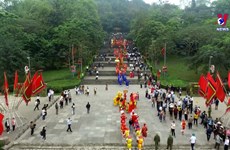Ninh Binh promoting archaeological values
An ancient brick grave was unearthed while foundations were being dug for new classrooms at a primary school in Gia Thuy commune, Nho Quan district, in 2020. Scientists found a host of valuable information proving that Gia Thuy was a vibrant cultural area during the first few centuries AD. The brick grave and collected artifacts were moved to the Ninh Binh Museum for storage and display.
Archaeological research in Ninh Binh began in the 1960s and 1970s. Since then, many types of relics have been discovered, excavated, and explored. Important discoveries at Hoa Lu Ancient Capital in recent years have contributed to identifying this as a major site of special significance for Vietnam’s history and culture.
68 archaeological relics have been discovered, providing important historical and scientific data on the formation and natural and social development of Ninh Binh. Conservation work is generally conducted under two main methods: closing the relic with sandfill, which preserves the site as is, or building a roof to protect it, which is known as an on-site museum.
The Ninh Binh Department of Culture, Sports and Tourism will continue to mobilise social resources to invest in the research, conservation, and promotion of cultural heritage values in the province. It will also foster digital transformation and run a community archaeology programme so that local people can better understand the history of the locality and participate in preservation and promotional efforts./.













